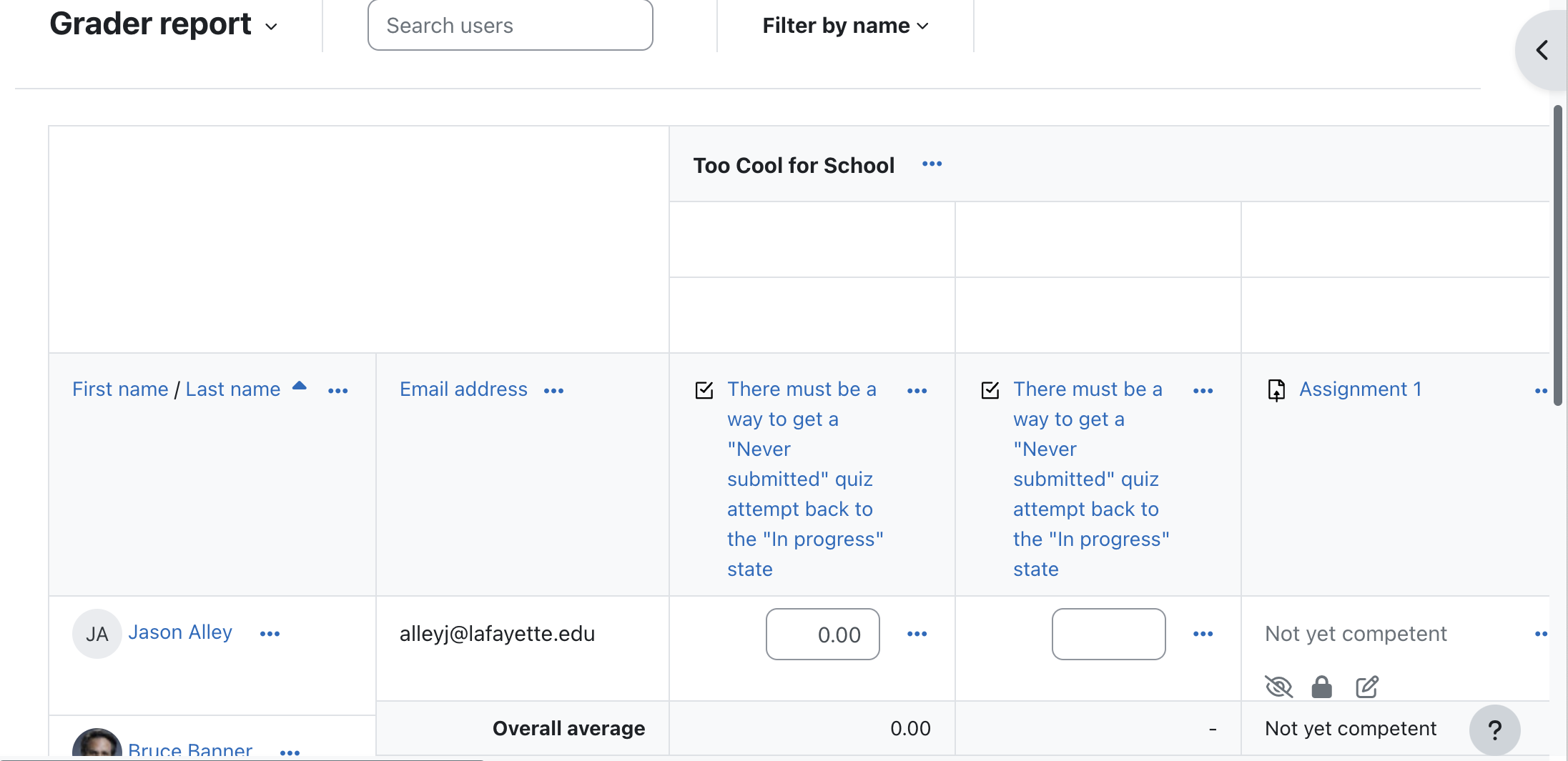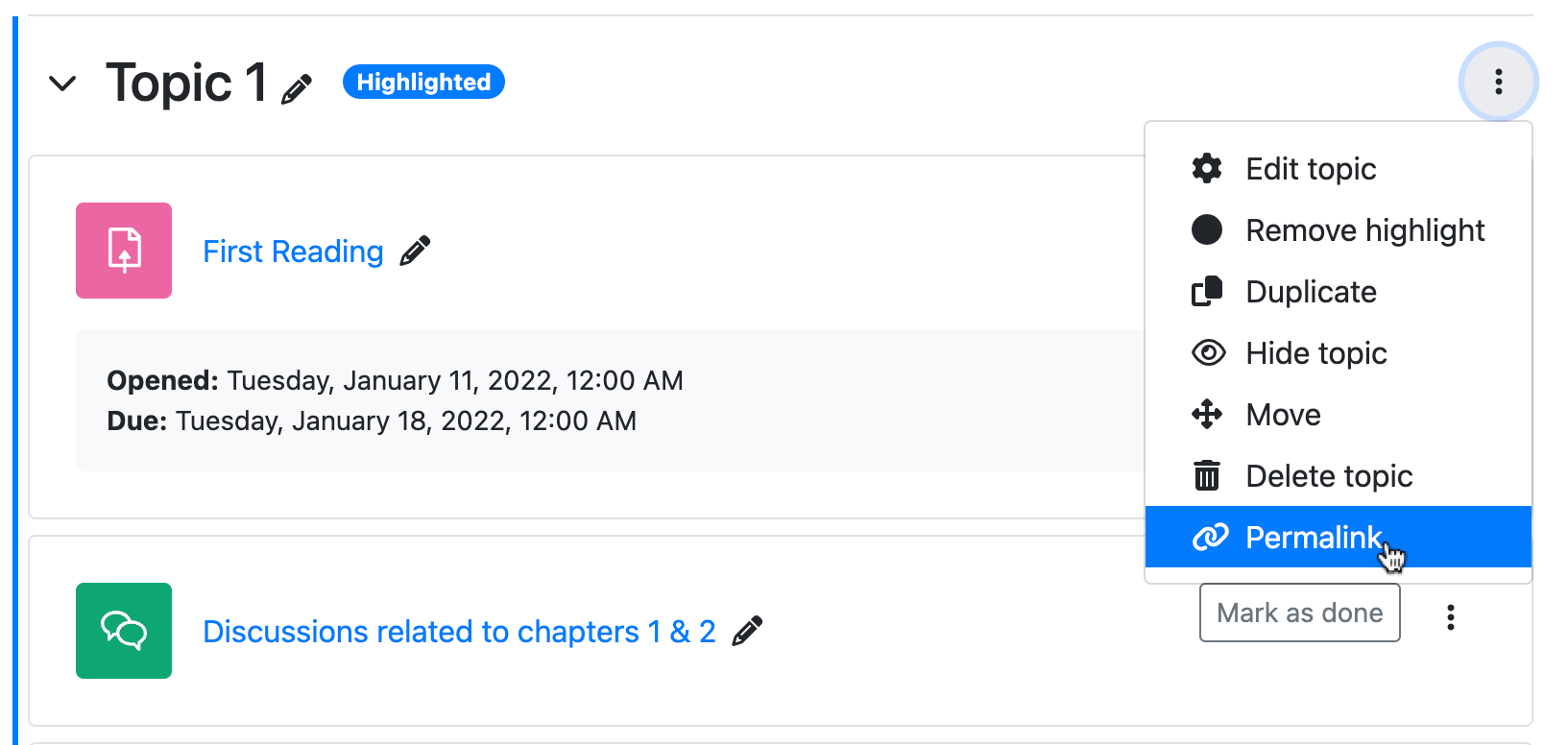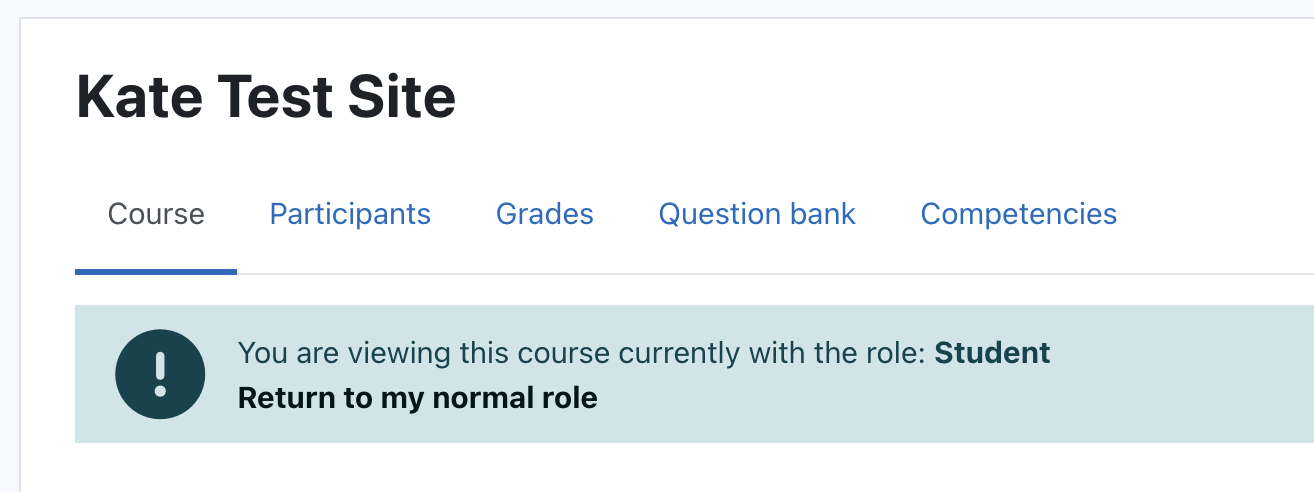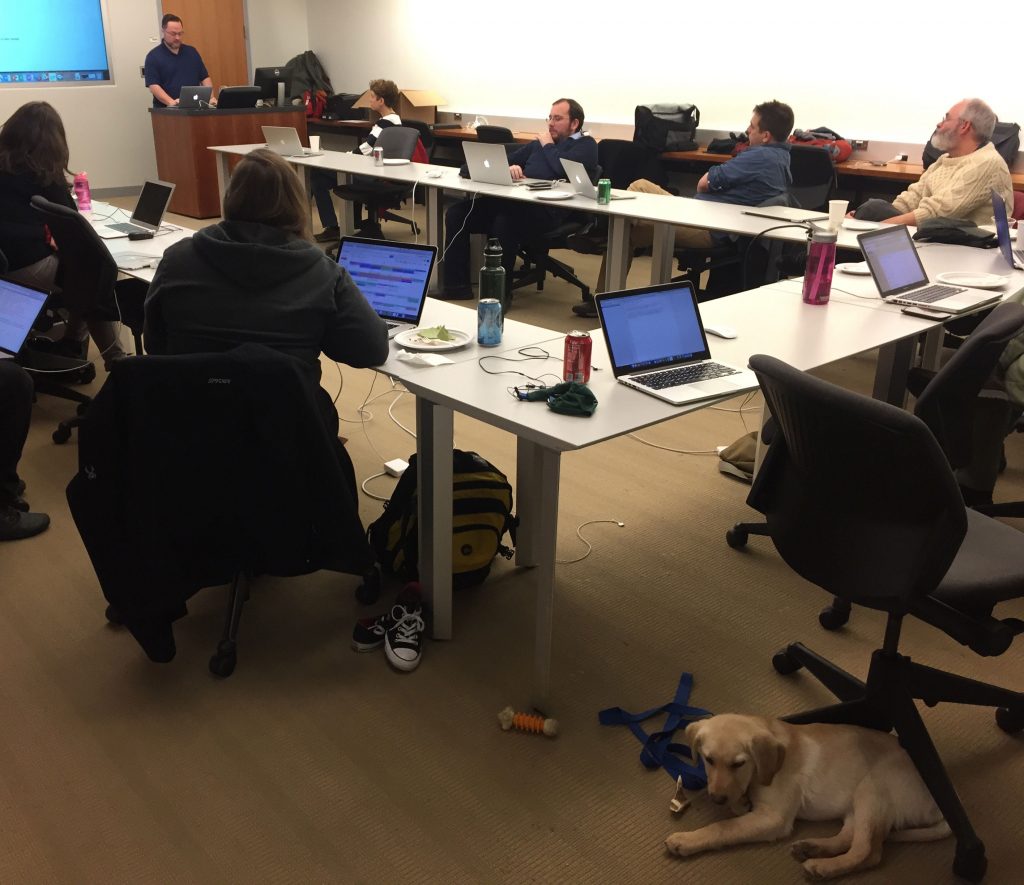
CLAMP spent three pleasant days at Lafayette College evaluating Moodle 4.2. The group’s impression was favorable; Moodle 4.2 addresses several issues from Moodle 4.1 (see the Swarthmore report for details on 4.1) and improves the user experience. CLAMP also held a roundtable discussion on the present state of integrating Moodle with Banner, facilitated by Eric Merrill. Read on below for details of the various issues we discussed. CLAMP’s next Hack/Doc Fest will be held this coming January at Connecticut College in New London, Connecticut.
Issues
Banner
Ellucian will deprecate support for traditional flatfile Banner extract generation (ICGORLDI) in June 2024. While the tool will not be removed, the end of support requires a rethink of integrating Banner with Moodle. The discussion at Hack/Doc identified four options:
- Switch to using Ellucian’s cloud-hosted ILP offering. This will require paying an additional yearly licensing fee and changing to a different Moodle enrollment plugin. In addition, Ellucian’s current implementation does not support all the features LMB supports. Schools would need to discuss this with their Ellucian representatives to determine possible loss of functionality.
- Build an alternative ILP integration using the Ethos and Person APIs. Oakland University already has a working implementation and is willing to collaborate with other institutions. This would allow real-time enrollment updates.
- Write a script that queries Banner and generates XML files that can be used by the existing LMB plugin, acting as a drop-in replacement for ICGORLDI. Swarthmore College already does a version of this and shared their scripts.
- Continue to use ICGORLDI, given that deprecated tools tend to continue working for years on end.
Several schools expressed interest in option 3 as a short-term step and will collaborate within CLAMP to produce a generalizable solution.
Indentation
Moodle 4.2 restored the ability to indent items on the course page, albeit you may only ident one level. You do need to enable this behavior for the topics and weekly course formats in the site administration. In general, resources that were indented pre-4.0 are intended again in 4.2. The indenting was also backported to Moodle 4.1. As a further enhancement, the indenting is now reflected in the course index at left. Moodle HQ has also opened a new issue to discuss further improvements around creating a “hierarchy” within a course.
Plugin name on course page
Moodle no longer displays the plugin type (e.g. “Forum” or “Quiz”) under the name of the activity on the course page. This information is still available when editing is turned on. This change was also backported to the most recent 4.0 and 4.1 releases.
Student notifications
We looked into whether you stop students from disabling all notifications. The answer appears to be no: it is possible to disable the “moodle/user:editownmessageprofile” capability for a given role. This prevents the user from editing their messaging (User Menu > Preferences > Message preferences, /message/edit.php) and notification (User Menu > Preferences > Notification preferences, /message/notificationpreferences.php) preferences. This is a severe restriction and not advisable. CLAMP recommends setting up a report in the Ad-hoc database queries plugin to detect users who have all notifications disabled:
SELECT u.id, u.firstname, u.lastname, u.email FROM prefix_user u WHERE u.emailstop = 1
Old assignment module removed
In 4.2, Moodle removed the Moodle 2.2 and older assignment (mod_assignment). This had been retained for compatibility with old backups; old assignments were converted to the new assignment activity (mod_assign). The module is published on GitHub if anyone encounters this need in the future. We successfully restored an old backup into 4.2 using the module.
Text editors
At Swarthmore, we flagged an issue with the “new” TinyMCE editor integration and embedding links to documents and images. This is now fixed and the new TinyMCE is the default text editor on new installations. The “old” TinyMCE has been removed.
H5P
We reviewed the state of H5P and its integration with Moodle. CLAMP recommends that you review H5P’s content types recommendations to see which modules have accessibility challenges.
Grading interface

A number of interface improvements for the grade book landed in 4.2. New editing features include collapsing, sorting, lock, and hide indicators to clearly show the current status of each grade category and item. If you nest a category within a category, there are a ton of extra empty cells at the top of the grader report which makes the table awful to look at/scroll through.
Messaging within assignments
Assignments now have a new ability in 4.2 that allows instructors to send a message to specific students. For example, you may easily message all the students who haven’t submitted an assignment. Messages sent are in the sender’s private messages. Messages received also are in the receiver’s private messages. Activity in the messaging system is logged in the admin log but isn’t obvious.
Permalinks to Moodle course sections

Moodle 4.2 added the ability to permalink to a course section within a Moodle course. The permalink does not change if the course sections are reordered. It works with all course formats that we tested but isn’t very useful with the Grid format.
Moodle Mobile
CLAMP undertook another thorough review of the Moodle Mobile app. Hampshire enabled the app for evaluation; there were specific concerns about how well the app would support some of Hampshire’s customizations, such as support for monoymous names and pronouns. Findings included:
- The app adequately supports mononymity and external user images, but none of our other front-end hacks like pronouns.
- The app does not display custom blocks.
The app is clearly designed primarily for students, since editing capabilities are slim to nonexistent.
The free version can only send push notifications to up to 50 devices. The paid version is $218/year for 500 devices, $534/year for unlimited devices. Hampshire sees the push notifications as the primary advantage. - SSO logins are well supported, you can configure the app to just open whatever SSO you use in an embedded browser (Site Admin > Mobile authentication > Type of login).
Never submitted quizzes
Lafayette had a problem last year where a professor set an expiration/closer to a quiz and a student’s computer crashed and they were kicked out of their quiz attempt and were unable to submit the quiz. Moodle 4.2 addresses this by allowing a teacher to “re-open” a “never submitted” attempt, which will then be immediately submitted for grading.
Blocks–what is to be done?
Moodle 4.2 refactored the block drawer, reducing the default visibility of blocks. We surveyed participating schools to see how they’re handling blocks going forward:
- Lafayette: went “blockless” by default when it switched to Boost; uses the main or secondary navigation for additional links.
- Swarthmore: using default Boost with blocks in the drawer, but have experimented with Learnr, which allows for defined block regions.
- Macalester: using default Boost with blocks in the drawer. Has default blocks at the dashboard level, not the course level.
- Hampshire: using default Boost, blocks in the drawer, plus a “Course Information” block at the top of sections (core hack for that region). We use a lot of blocks (added to courses by default) including Filtered Course List, custom “Library Info”, “Learning Collaboratives”, and “Study Tools” info blocks, and Quickmail.
- Connecticut: similar to Hampshire. Default blocks in course-level drawer include calendar, library/ARC, upcoming events, Quickmail. Default blocks in the dashboard drawer include student resources (accessibility), calendar. Courses will also have a block linked to a book hidden on dashboard moving forward.
Bulk actions
Moodle 4.2 adds a “bulk actions” feature for teachers. A “Bulk edit” button at the top of the page displays the user menu at the bottom with options to move, duplicate, delete, or change availability. It doesn’t do dates, so CLAMP still includes the “Edit Dates” plugin in the LAE. A few notes about the behavior:
- If you select multiple things to duplicate, they will duplicate separately immediately under their respective original item.
- If an entire topic is selected, the duplicate option goes away
- Bulk moving only works using the “move” icon, can’t drag them even though the nav cross-hatch icon shows up when you hover
Independent of this feature, you can duplicate an entire section from that section’s context menu.
MoodleNet
MoodleNet seems to be Moodle’s answer to the growing call for open educational resources (OER). It is meant to serve as a repository for individual resources (PDFs, URLs, etc.), modules (activities, quizzes, etc.), and entire Moodle courses that anyone can acquire and utilize. Users can upload a backup file from Moodle of any of these items if they wish to share it with a larger community. The website lets you browse openly for resources, though options are fairly limited at the moment. In order to actually put MoodleNet material into your Moodle site, one can simply click the “or browse for content on MoodleNet” icon at the bottom of the “Add an activity or resource” menu.
There doesn’t seem to be much moderation; there empty sites and some inferior resources. We were able to find a course that was populated with activities and was able to import it pretty seamlessly directly from MoodleNet (no download needed). Uploading open resources for others to use is also pretty straightforward. We’ll need to see how this develops.
Learnr
The Learnr theme had a pretty significant update for Moodle 4.2. The developers recommend uninstalling Learnr prior to installing 4.2r6 or higher. Things that seem to have changed since 4.1:
- “Boxes” in the navigation menu (left-hand) separate the topics
- Course management bar at the top replaced old top block drawer
- Less white space, even less than 4.1 Learnr
- Big unavoidable banners present at top of page when course is hidden from students or if you are in a role other than your own
- If you are in a hidden site as a student it does NOT immediately kick you out – it lets you look at the site as a student!

Boost Dark Mode
There’s a long-standing proposal to add a dark mode to Moodle’s Boost theme. Boost is based on the Bootstrap framework; Bootstrap 5 supports dark mode, but Boost is still based on Bootstrap 4.
Kaltura navigation in 4.2
The latest Kaltura Video Package release updates the internal navigation for Moodle 4.2. The “My Media” link is now in the main site navigation across the top. There is a configuration option for displaying the course gallery in the course settings or in the Kaltura Course Gallery block.
Hidden group membership
Moodle 4.2 allows hiding group memberships from certain roles (for example, for data privacy reasons). This worked as expected.
Moodle 4.2 Liberal Arts Edition
CLAMP has released the Liberal Arts Edition of Moodle 4.2.1. This includes the usual package of contributed modules and core modifications; we encountered no surprises in preparing it.
And in conclusion…
Whew! A big thank you to everyone who participated in this June’s Hack/Doc Fest, whether in person or online, and to those who couldn’t make it but sent in suggestions/ideas anyway. We’re looking forward to seeing you all in New London in January.



